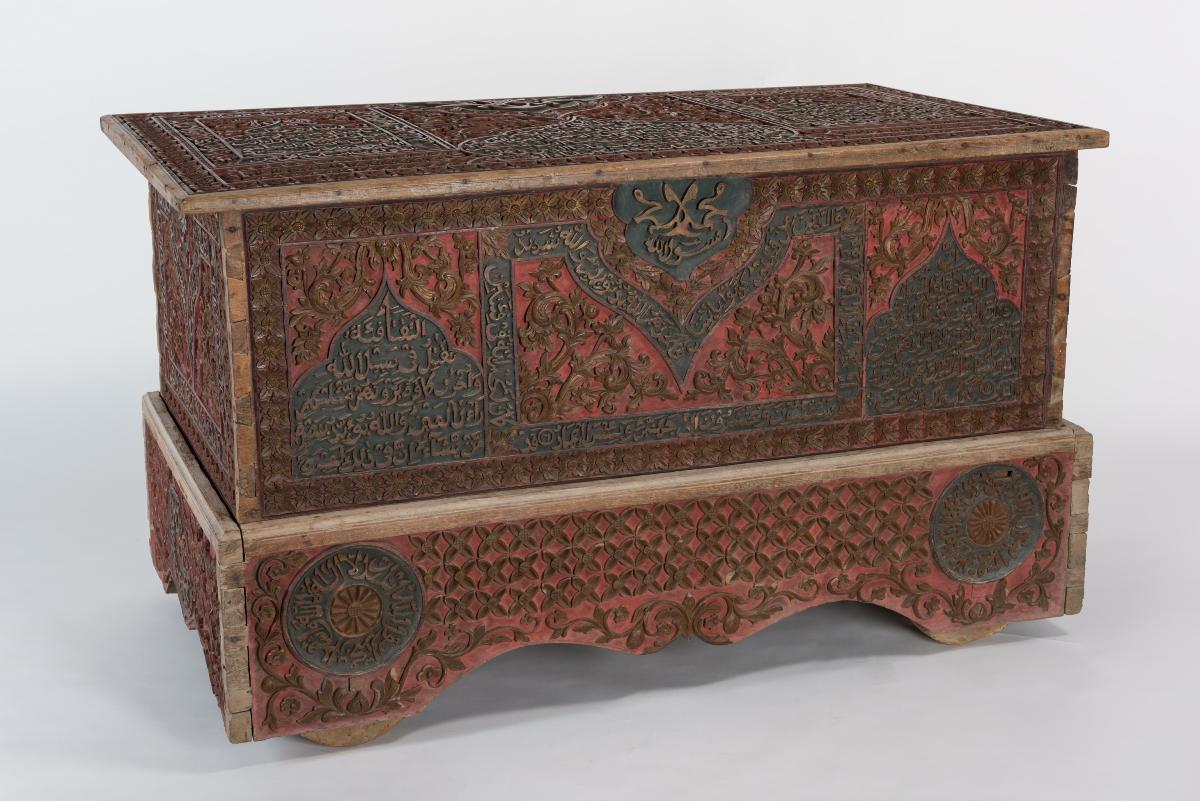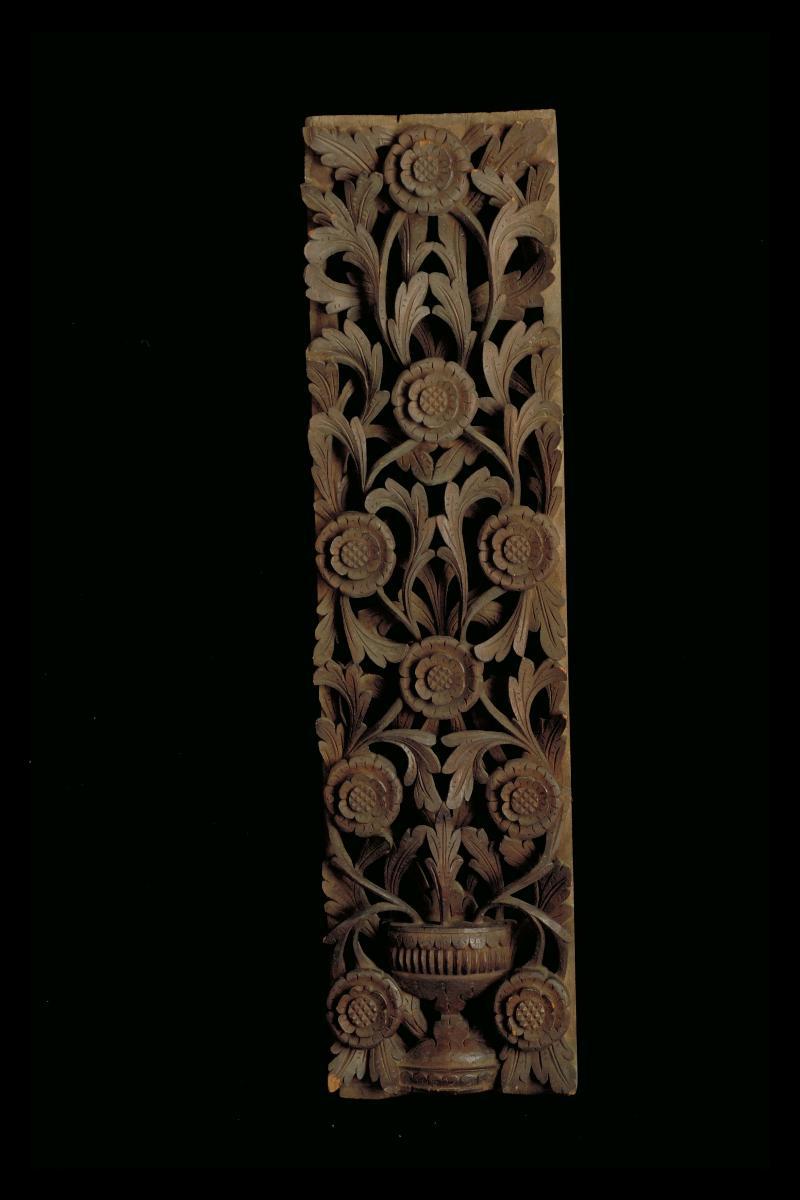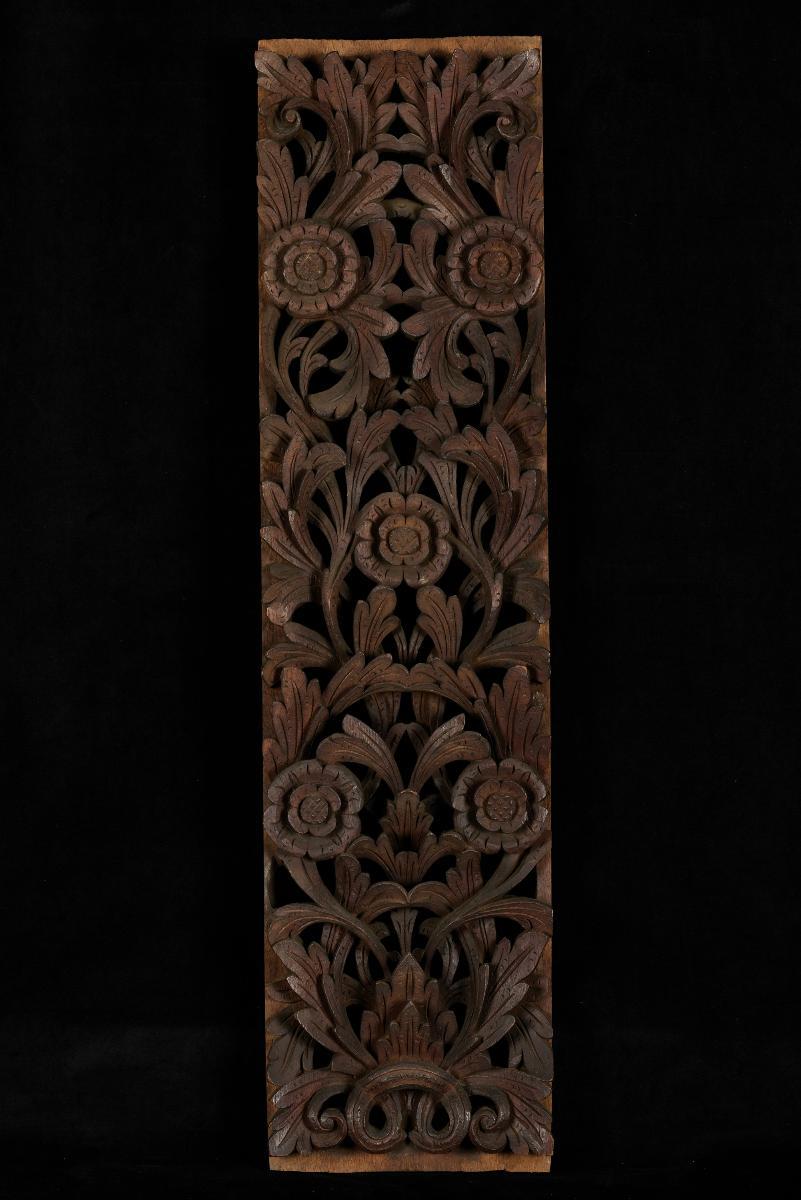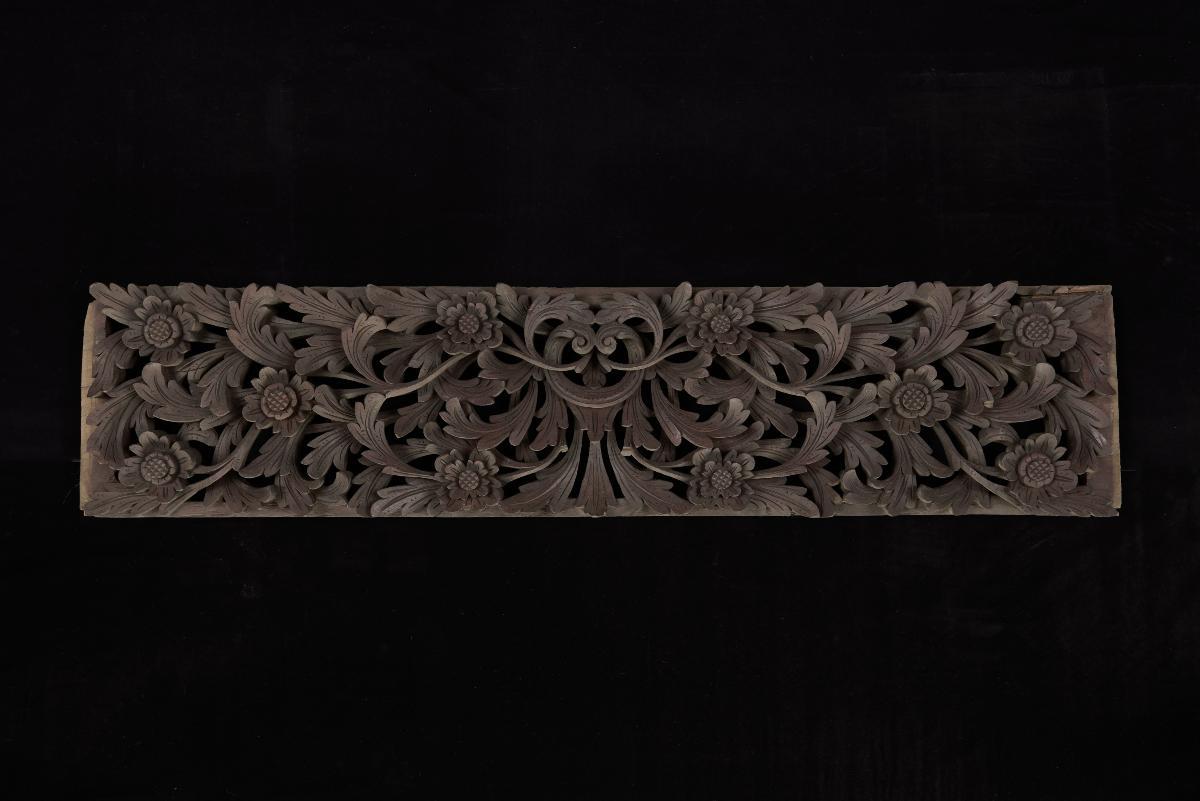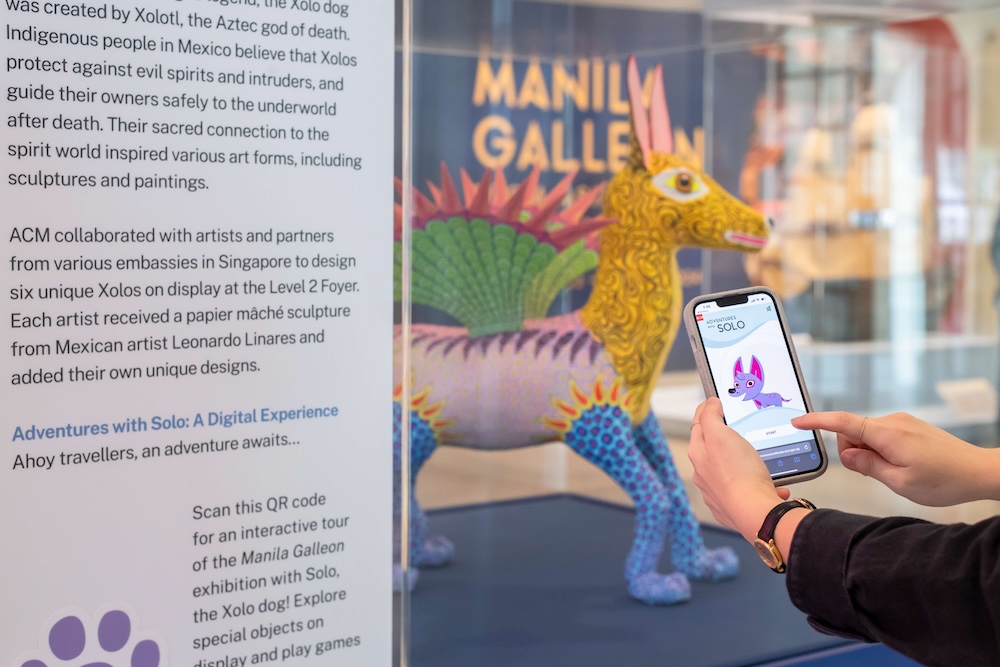Carved teakwood furnishings, panels and other decorative elements such as this large chest were produced in a number of locations along the northern coast of Java. Perhaps the best known was the town of Jepara which today still produces such furniture. Large chests, known as a grobog, were used as storage, primarily in aristocratic or wealthy homes. The elaborate Qur’anic verses carved onto this chest would have been considered protective, keeping the contents of the chest safe. Sometimes these chests have carvings of fierce deities or protective animals such as nagas or tigers. The overtly religious content of the carvings though does suggest the possibility that it may have been used for religious purposes, perhaps in a mosque or religious school.





